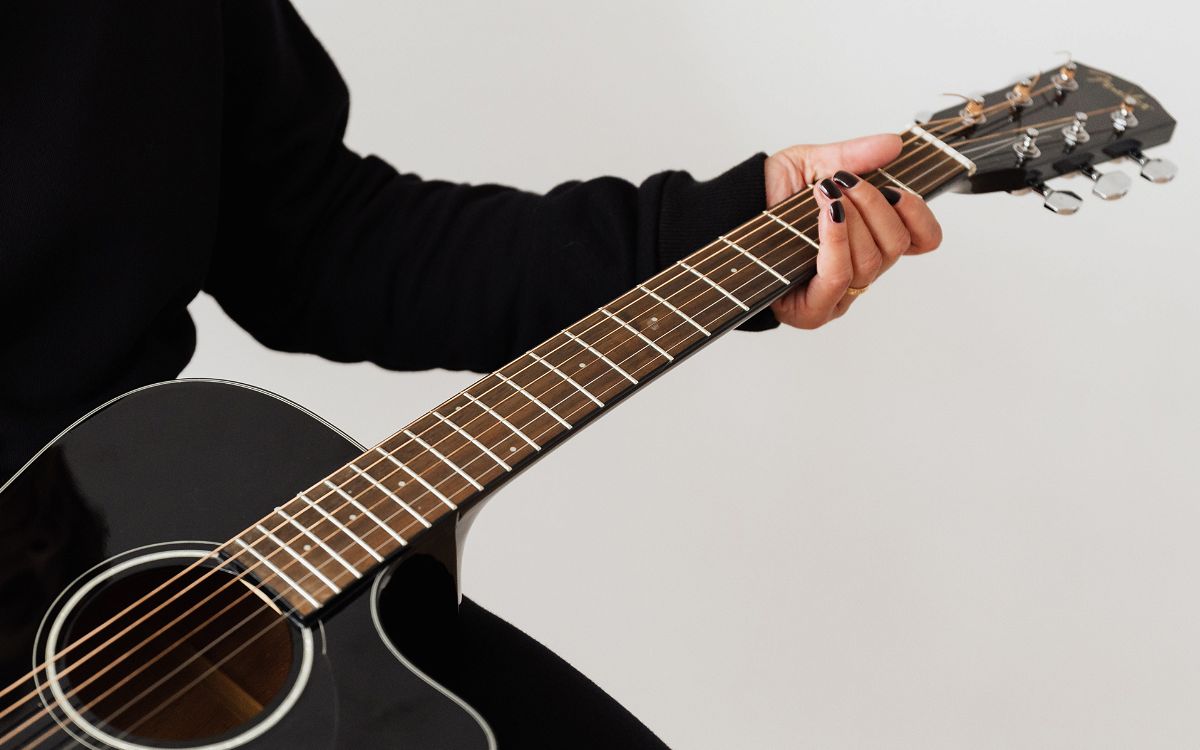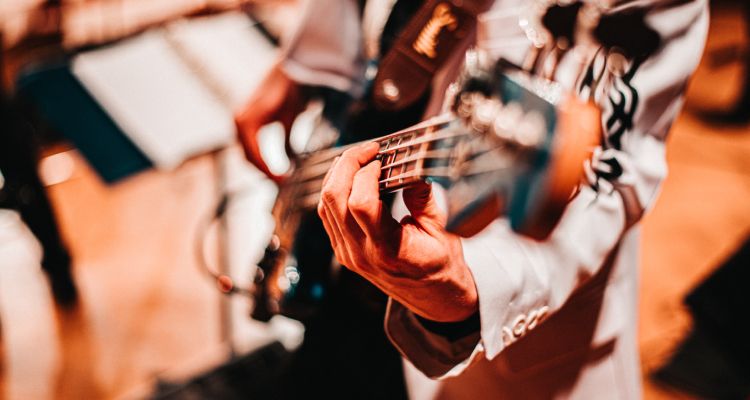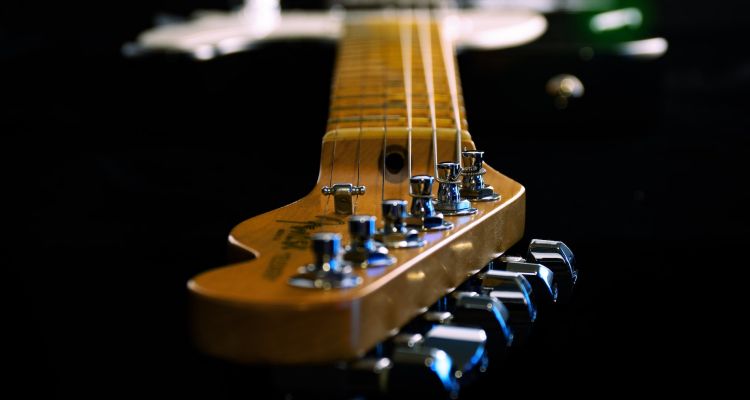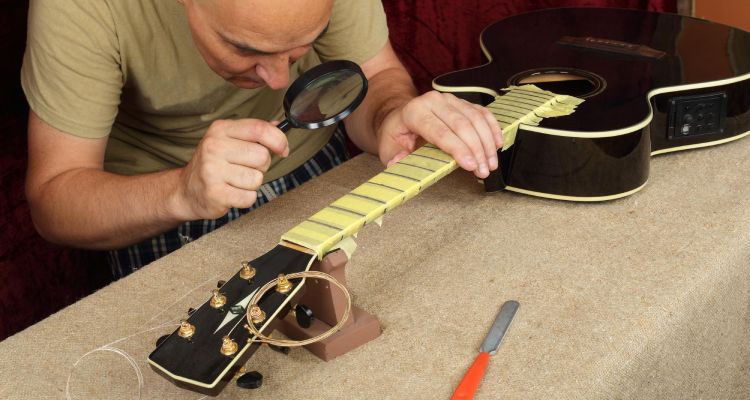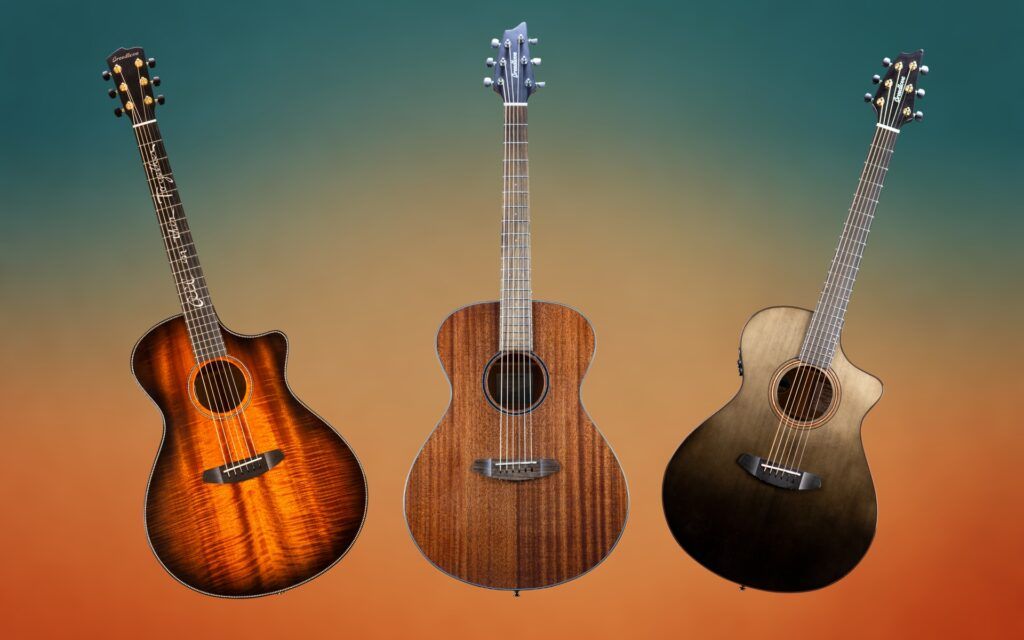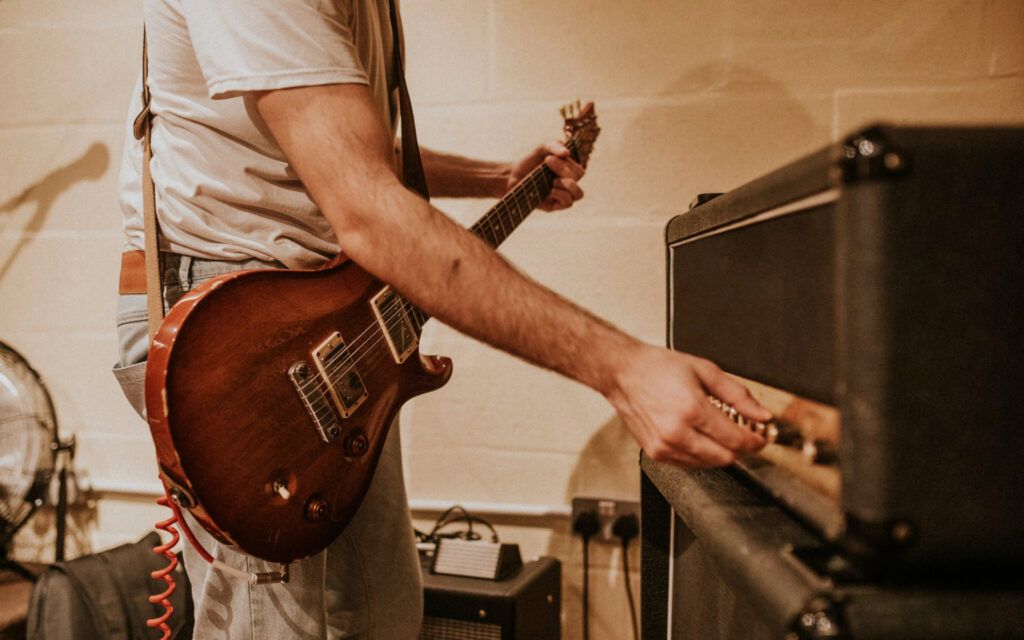In an ideal world, a guitar would remain the way that it was initially designed forever. Realistically, all guitars change over time. Some of these changes are desirable, but others don’t have a positive effect on the instrument.
One of the most common problems guitarists encounter is a warped neck. The neck is one of the most vital parts of a guitar, as it impacts everything from tuning stability to playing comfort.
In this guide, we’ll look at the most common reasons that guitar necks warp. We’ll also provide you tips on what to do if you have a warped neck so that you can solve the problem.
Why Do Guitar Necks Warp?
Guitar necks warp due to a variety of factors. The most common cause of neck warping is the guitar being exposed to changes in temperature, causing the wood to move. Also, humidity and moisture can cause the neck to warp, as can poor build quality.
How A Warped Guitar Neck Affects Your Guitar
If your guitar neck is warped, almost every aspect of the instrument will be negatively affected. A slight warp may go unnoticed for a while, but once the neck reaches a certain point you’ll need to address the problem.
Tuning Stability
When a guitar neck warps, the area that is affected the most is tuning stability. In some cases, depending on how badly the neck has warped it may make it impossible to tune the guitar accurately.
Bad intonation means that when you play different notes across the fingerboard, some are out of tune despite the open string being tuned to the correct root note.
This can usually be rectified by adjusting the action of certain strings, but when the neck is warped, it becomes impossible to fix. Therefore, when you play certain chords, the notes will clash and the sound will be negatively affected.
It, therefore, becomes impossible to play the guitar properly, as certain notes will sound wrong even if you’re using the correct chord shapes.
Tone
Another unwanted side effect of having a warped neck is that the tone of the guitar will be limited. This is down to a combination of the incorrect intonation which causes notes to sound strange, and the way the strings are moved.
In some cases, a warped neck may cause undesirable noises to be present when the strings are played. Buzzing and rattling sounds are common when the neck is warped, which makes it hard to record the guitar’s sound.
Certain notes or strings may also sound subdued, causing the overall tone of the guitar to sound weaker. Projection and volume can also be limited due to the wrong position of the neck.
Playability
The negative effects of a warped neck are not only experienced sonically. It’s also likely that this will cause the guitar to be harder to play. String tension may be increased or decreased, so even with perfect technique, the guitar won’t respond optimally to your playing.
Furthermore, it may be more difficult to get your fingers into the right positions to play certain chords, licks, or riffs. When a guitar neck is straight, muscle memory makes it easier to hit the right frets, but this is much harder when the neck is warped.
The Main Causes of A Warped Guitar Neck
Now that we’ve established the most likely areas that a warped guitar neck will impact, we need to analyze the common causes of this issue. In some cases, a warped neck occurs due to no fault of the guitarist.
However, in other instances, the warped neck can be avoided if the instrument is cared for and maintained properly.
Temperature Changes
Although a guitar neck can warp for a variety of reasons, the most common cause by far is temperature changes. When wood is exposed to cold and hot conditions, it contracts and expands.
Indeed, the harder the wood type, the less likely it is to change due to fluctuating temperatures. However, guitar necks are often made from woods that feel smooth and refined, and unfortunately these qualities also often mean they are susceptible to being warped by different temperatures.
The only way to ensure that your guitar neck isn’t adversely affected by heat or cold is by keeping it at room temperature whenever possible.
If your guitar is left in a vehicle overnight and gets extremely cold, this will cause it to warp over time. If you make sure to take it inside and keep it at a consistent temperature, you can minimize the chances of this happening.
String Pressure
When strings are installed on a guitar, they must be tightened to optimal tension for the elected tuning. This tightening process increases the tension and pressure on the guitar’s neck.
This can slowly cause the neck to move over time, and unfortunately, it’s very difficult to prevent. If the strings are over-tightened regularly, this will increase the chances of the neck warping.
One way to prevent warping from string tension is to tune the guitar strings down slightly when you are done playing.
This will decrease the amount of pressure that the neck is under, and if you make it a regular practice, it will likely prevent the warping process.
Do Guitars Warp Over Time?
Another reason that guitar necks warp is simply due to the natural aging process of the wood. High-quality tonewoods like maple or mahogany are less likely to warp due to aging, but more affordable wood types may be more prone to this issue.
Wood is constantly changing as it matures, and many of these changes result in a better sound and feel. However, the neck may change shape or size as the wood ages, and this will produce undesirable results.
As I previously mentioned, the best way to combat the warping process is to ensure you maintain your guitar properly.
This means avoiding over-tightening the string, and keeping the instrument at a consistent room temperature whenever possible.
It’s also important to avoid laying the guitar down on the floor or propping it up with the neck. The pressure of the weight of the instrument will cause the neck to move if this is done regularly.
Using a guitar stand or a wall hanger is a good way to reduce the tension on the neck when the instrument is not being played.
How To Tell If A Neck is Warped
It’s not always easy to identify a warped guitar neck, especially if it is only slightly warped. Nevertheless, even a slight warp will result in your guitar’s sound and fee; being compromised.
Identifying the problem will allow you to decide on the best measures to take going forward to rectify the warped neck and get your instrument back in top condition.
Visible Warping
One of the easiest ways to identify a deformed guitar neck is simply by looking at the instrument. A guitar neck should be perfectly flat and straight, so you can usually see when it has become warped, twisted, or bent.
Hold the guitar directly straight in front of you, and close one eye. Look straight down the neck, and try to see whether it looks straight or if there are any noticeable twists or bends.
Then, turn the guitar around and repeat the test from the other side. This should allow you to notice if the shape isn’t straight.
Ensure that you avoid holding the headstock of the guitar, as this will put more pressure on the neck. The body is the best place to hold a guitar as it is able to support the weight of the neck.
Analyzing The Sound
If your guitar strings are tuned to standard tuning, you can use another simple test to see whether the neck may be warped.
After tuning each string precisely to EADGBE, play the 5th fret on the low E string at the same time as the open A string. These notes should sound the same. If you can hear differences in the notes, the intonation is out.
You can repeat this on the 5th fret of the A string while playing the open D string, then again with the 5th fret on the D string and the open G string. However when you get to the G string, you’ll need to play the 4th fret with the open B string, before then playing the 5th fret of the B string with the open high E string.
Measuring Fret Distance
The space between the fretboard and the string should be at its maximum around the 8th fret of the high and low E strings. By measuring this distance, you can gauge whether the neck is warped.
If there is another point of the fretboard that has a deeper curve than the 8th fret, the chances are the neck is warped. If this distance is significant, you may need to replace the neck of your guitar.
How Do You Fix A Warped Guitar Neck
If a guitar neck warps, all is not necessarily lost. Depending on the severity of the warp, it may be possible to fix the neck using one of the following processes.
Can you fix a warped neck? In some cases, yes, but it depends on the severity. It therefore may be a better option to replace the neck completely.
Truss Rod Adjustment
A guitar neck that is slightly warped can be fixed simply by adjusting the truss rod. This component is included in most modern guitars, and it is usually very easy to adjust the truss rod position.
Getting Expert Advice
If your guitar does not have a truss rod system, it’s a good idea to take it to a luthier so that you can get a professional opinion. While it may be tempting to try and fix the problem yourself, you may end up making it worse.
Professional luthiers will be able to tell you exactly what the extent of the damage is, and advise you on how best to approach fixing it.
They may use a method like heat treatment, which involves deliberately changing the shape of the neck by exposing the wood to heat until it is straight again.
Summary
A warped guitar neck is unfortunately quite a common issue that most guitarists will encounter at some point. The instructions and information in this guide will help you to identify the problem and hopefully get it sorted as quickly as possible.

